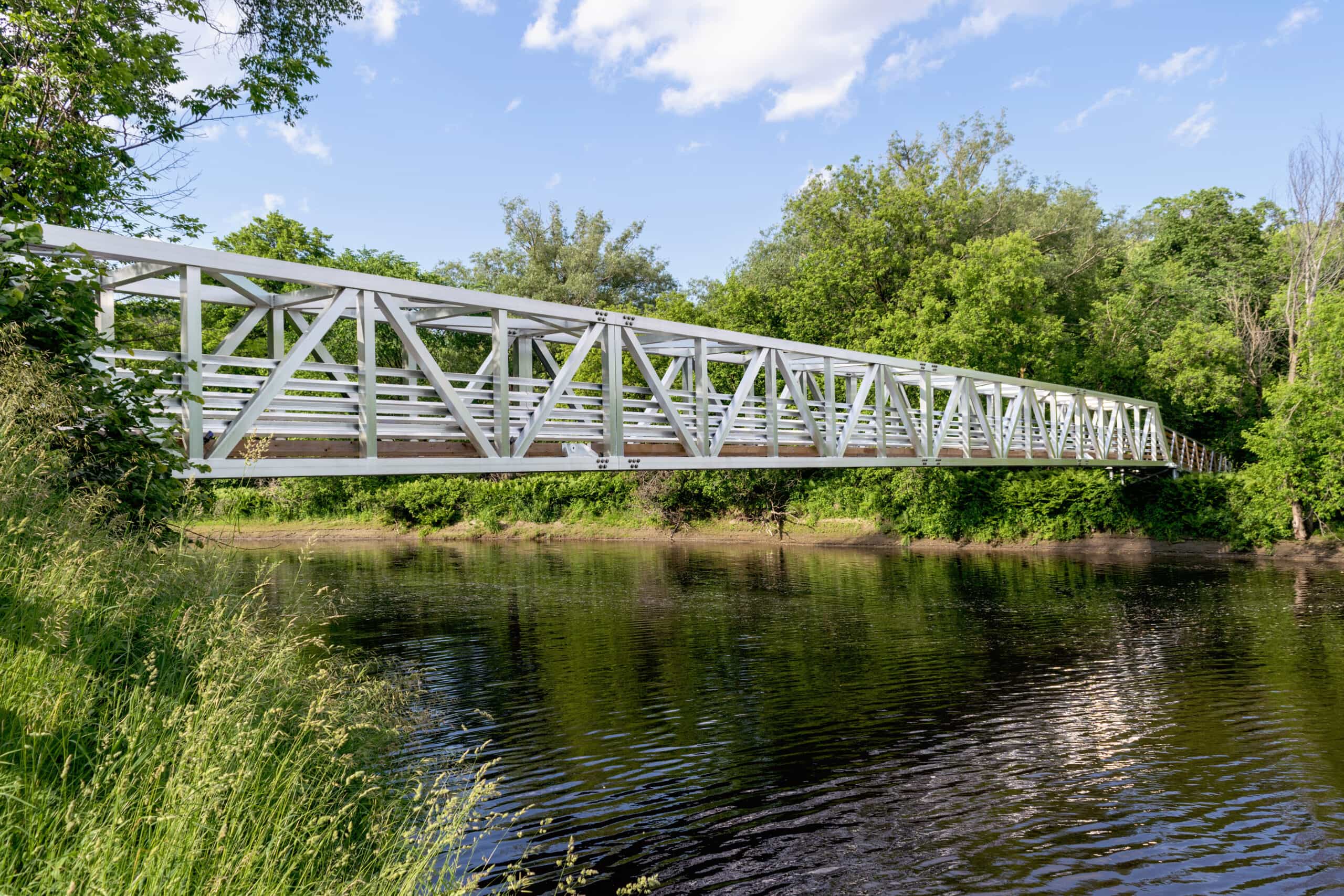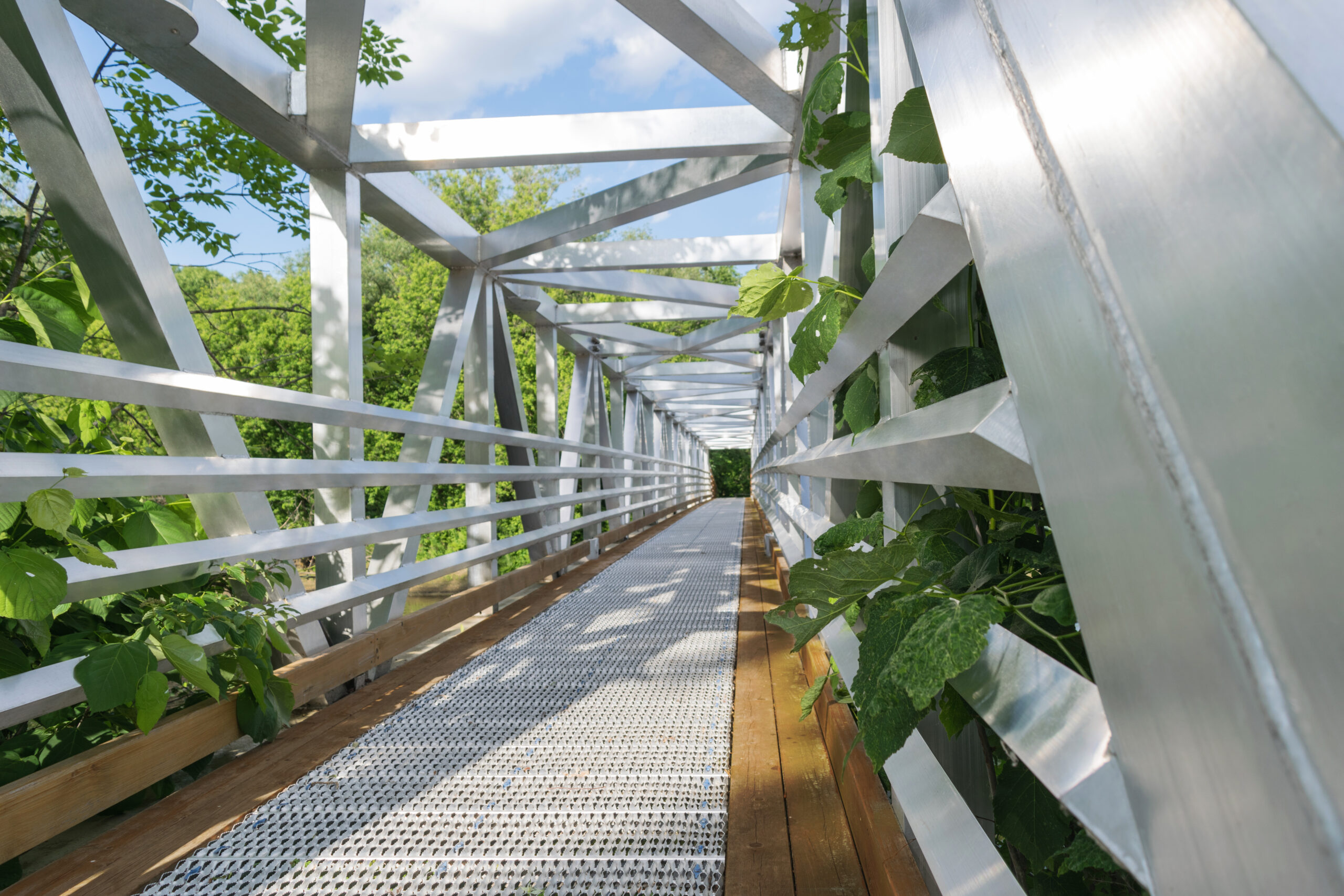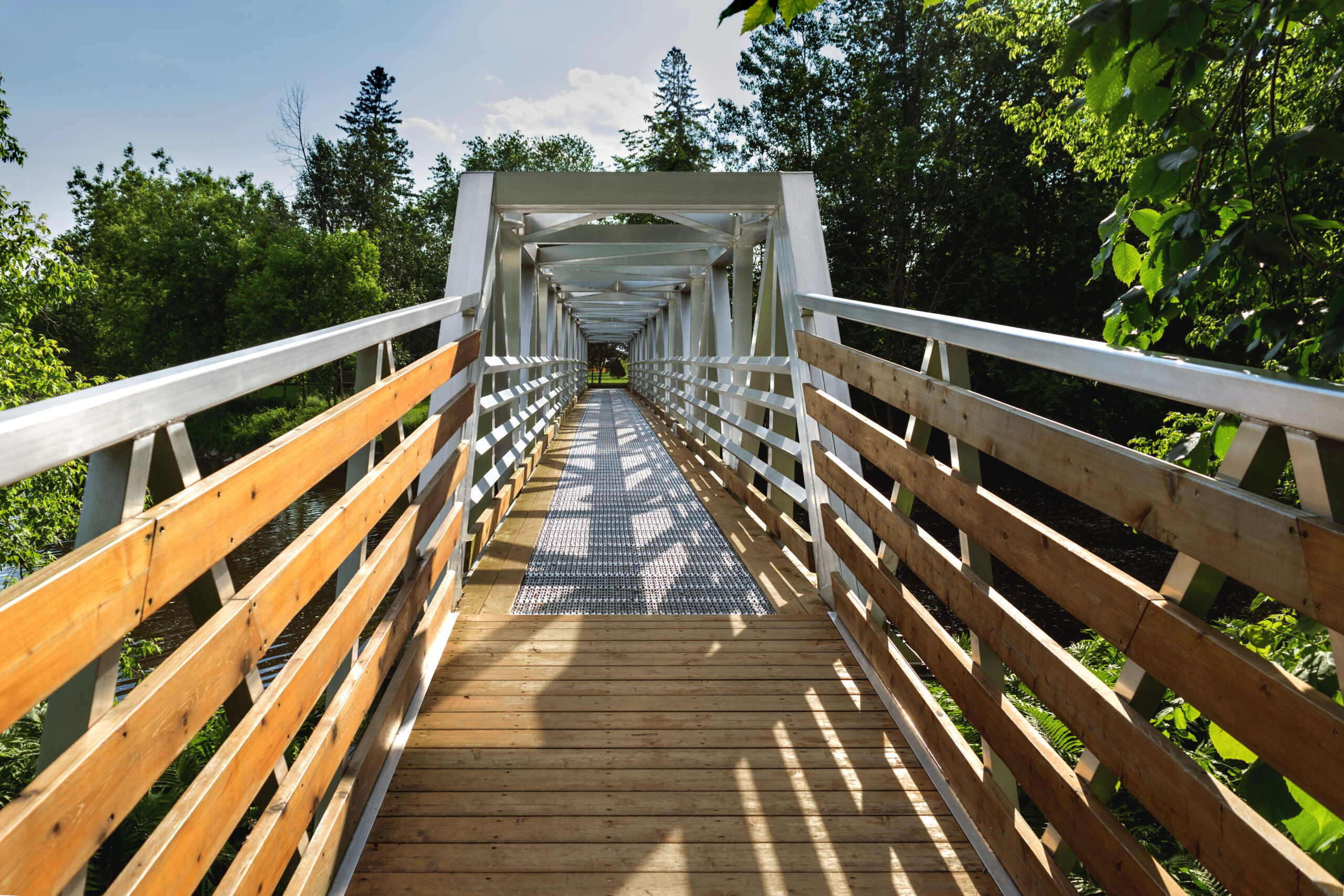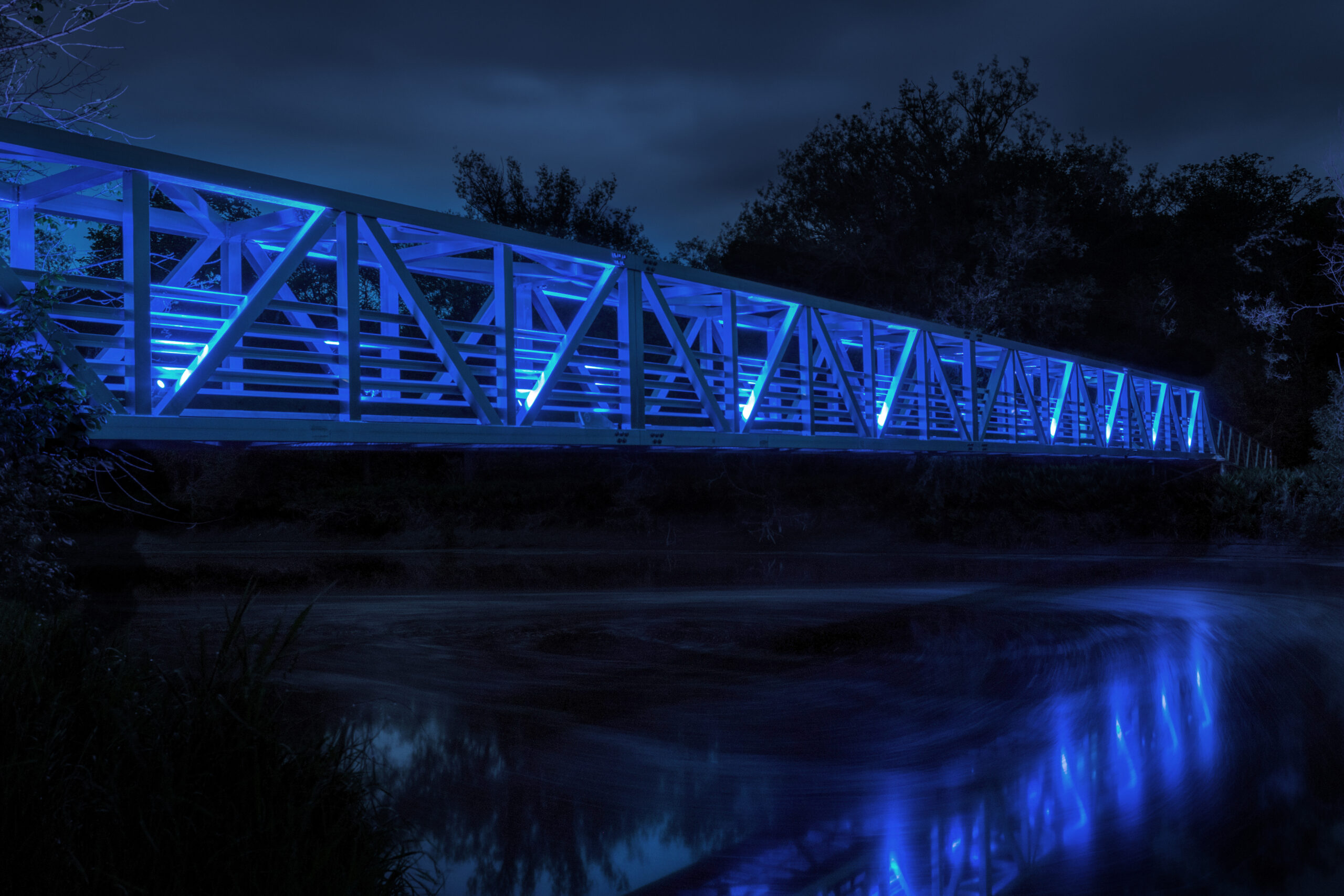Start your Aluminum Structure Project
From the Malampaya Project to a Québec Nature Park — A Second Life for a Custom Aluminum Bridge
MAADI Group is giving one of its custom welded aluminum pedestrian bridges an extreme makeover after its return from deployment across the globe.
This transformation highlights MAADI Group’s commitment to sustainable infrastructure and adaptive reuse of engineering assets. Rather than scrapping or melting down the returned structure, MAADI Group is showcasing the long life cycle and design flexibility of aluminum bridge components. The project serves as a textbook example of circular engineering, extending the bridge’s useful life while reducing the environmental impact of producing a brand-new structure.
From Offshore Oil Rigs to Scenic Trails
October 14th, 2016 – Boucherville, Québec, Canada – The bridge is returning to Québec from its first installation halfway around the world to serve a radically different purpose. MAADI Group is transforming the bridge structure from its former function connecting two offshore platforms in the Pacific Ocean to its new role as the main trail bridge at the Théatre de la dame de Coeur nature park. The bridge’s new owners, the Corporation de développement de la rivière Noire (CDRN), Roxton Falls, Québec, have commissioned MAADI Group to re-purpose the entire aluminum structure, transforming it from a heavy-duty industrial work bridge to a pedestrian and eco-friendly trail bridge. In its new location, the bridge will be used for hiking, cross-country skiing, and as a route for theater staff and park maintenance crews.
New Use in a Québec Nature Park
This initiative marks a pioneering move in green bridge construction, where existing high-performance infrastructure is tailored to meet new environmental and community needs. The nature park setting presents a stark contrast to the offshore environment for which the bridge was originally engineered. This challenge, however, is met with enthusiasm by MAADI Group’s engineers, who are leveraging their deep expertise in aluminum structures to execute the transition seamlessly.
Precision Retrofit and Engineering Adaptation
The 15.2-ton high-strength aluminum pedestrian bridge has traveled 26 330 kilometers (16,360 miles) across the world and back to the Port of Montréal, and then on to MAADI Group’s Boucherville manufacturing facilities to be refurbished and adapted to its new surroundings. Structural modifications for the utility bridge include: replacing industrial guardrails with new guardrail fencing as required by the Canadian CSA S6 Bridge Code, which allows the bridge to expand from its previous width of 1.2 meters (4 feet) to an increased clear width of 1.8 meters (6 feet); bridge live load capacity will now be 4.0kPa; new side supports will allow the bridge to be placed on screwed piles; removing of vibration dampers previously required to resist typhoon-force winds; and the addition of wooden planks on each side of the existing grip span floor decking, which require adding welded plank supports. When complete, the refurbished bridge will be transported by four flatbed trailer-trucks to the nature park for permanent installation.
Detailed Modifications for Trail Use
Each retrofit modification is precisely engineered to maintain structural integrity while tailoring the bridge for its new function. This includes redesigning connections, re-analyzing load paths, and adapting to a non-industrial foundation system. The reuse of the bridge also delivers major savings in terms of carbon footprint and material costs, compared to fabricating a new bridge from scratch. MAADI Group’s in-house fabrication capabilities and ISO 9001-certified processes ensure that even these extensive alterations are carried out with the highest precision and quality control.
Aluminum’s Role in Long-Term Sustainability
MAADI Group President, Alex de la Chevrotière, P.Eng., said, “We are very pleased to retrofit one of our custom bridge designs for its new rivière Noire location in Québec. The key to successfully re-commissioning this bridge from an offshore utility bridge to a pedestrian trail bridge is that the structure’s truss framework, guardrails, and decking use aluminum components — this gives us great design versatility! Aluminum is a lightweight and natural material that will retain its original structural strength after our modifications are made, and ensure that the bridge will have long-term durability for the nature park. Our aluminum bridge is virtually maintenance-free and completely corrosion resistant. The adapted bridge will serve theater patrons and park-goers very well for decades to come.”
The Case for Aluminum in Civil Infrastructure
This quote underscores the growing role of aluminum in sustainable civil engineering. With its high strength-to-weight ratio, resistance to corrosion, and ease of customization, aluminum is ideal for modular and reconfigurable structures. As municipalities and developers look for greener solutions, aluminum bridges such as this one are expected to play a key role in eco-responsible public infrastructure.
Tested for Strength — Twice
Prior to retrofitting, the original bridge passed stringent load and deflection tests in Granby, Québec, before reaching its offshore destination. Systematic tests used 8.6 Tons of bottled water to gauge uniformly distributed loads on the bridge, to ensure it had the structural stiffness and strength to withstand required weight loads during offshore use. Tests also measured deflection responses and stress effects on key bridge welds and joints, meeting all International Codes and Standards. The modified bridge also meets all local and national bridge codes and standards.
A Model for Future Sustainable Infrastructure Projects
The project has become a flagship example of repurposing engineered aluminum infrastructure for local use. It illustrates how industrial assets can be redirected into community-building applications without compromising performance or safety. In doing so, MAADI Group not only maximizes the value of its past work, but also sets a precedent for future sustainable engineering projects across Canada and beyond.





